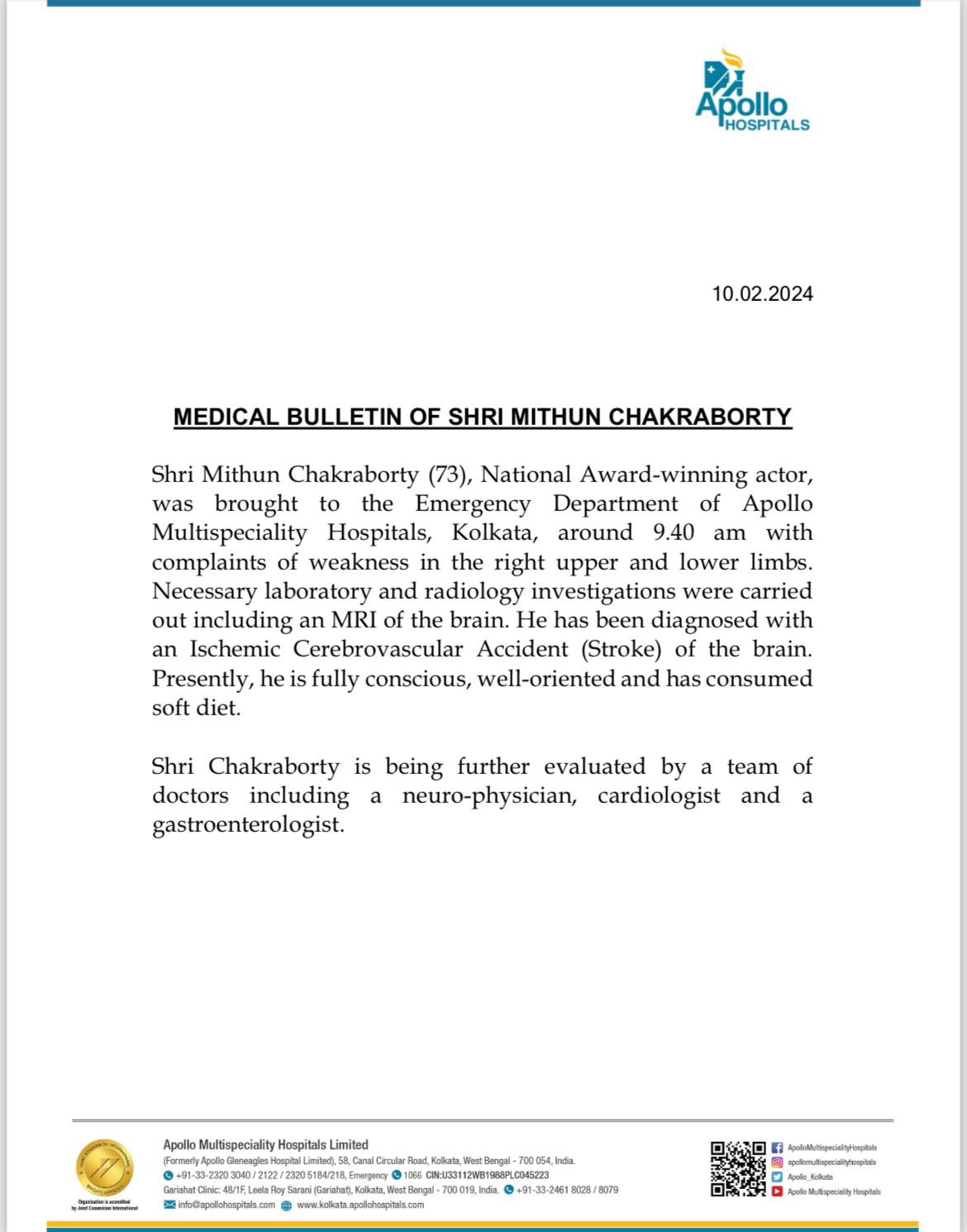
views
On Saturday, February 10, the actor-turned-politician Mithun Chakraborty was hurried to the Apollo Hospital in Kolkata. The actor was allegedly brought to the hospital after complaining of not feeling well. The hospital where the renowned star is being treated released a medical bulletin a few hours ago, providing everyone with an update on his status.
“Shri Mithun Chakraborty (73), a National Award-winning actor, was brought to the Emergency Department of Apollo Multispeciality Hospitals, Kolkata, around 9.40 am with complaints of weakness in the right upper and lower limbs,” according to a statement released by Apollo Hospital on Saturday. A brain MRI and other necessary laboratory and radiological tests were performed. An ischemic cerebrovascular accident (stroke) of the brain has been diagnosed in him. He is now completely conscious, focused, and has eaten a soft diet. A group of medical professionals, comprising a gastroenterologist, cardiologist, and neuro-physician, are still continuing the evaluation of Shri Chakraborty.

A medical illness known as an ischemic stroke, or cerebrovascular stroke, is characterised by an abrupt stoppage of blood flow to a portion of the brain, leading to neurological impairment. Usually, this is brought on by an obstruction or blockage in a blood vessel that supplies the brain with blood. About 87% of all stroke cases are ischemic strokes, which are the most prevalent kind of stroke.
Key features of an ischemic cerebrovascular stroke include the following:
Types of Ischemic Stroke:
- Thrombotic Stroke:A thrombus forms in an artery, delivering blood to the brain, resulting in a thrombotic stroke.
- Embolic Stroke:A blood clot or other debris that originates elsewhere in the body (typically the heart or big arteries in the neck) might travel to the brain and obstruct a smaller artery, resulting in an embolic stroke.
Risk Factors:
- Increased blood pressure, or hypertension
- Diabetes
- Elevated cholesterol
- Smoking and Obesity
- An irregular heartbeat known as atrial fibrillation
- Stroke history in the family
- Age (risk rises with advancing years, especially after 55)
- Prior transient ischemic attack (TIA) or stroke
Symptoms:
- Abrupt numbness or paralysis in the arm, leg, or face, usually on one side of the body
- Abrupt disorientation, difficulty speaking or difficulty comprehending speech
- Unexpected vision problems in one or both eyes
- Abrupt difficulty walking, lightheadedness, unsteadiness, or lack of coordination
- Sudden, intense headache without apparent cause
Diagnosis:
- Medical background and physical assessment
- Neurological assessment
- To view the brain and blood vessels, imaging procedures like CT scans and MRIs are performed.
- Testing for risk factors and excluding other potential causes of symptoms with blood testing
Treatment:
- Management that is time-sensitive in order to restore blood flow to the damaged brain region.
- Thrombolytic therapy (drugs that break up clots) if the stroke is identified early enough and meets specific requirements.
- In some circumstances, a mechanical thrombectomy—a process that involves physically removing the clot—might be used.
- Medications to control underlying risk factors and stop new clot formation.
- Therapy for rehabilitation to assist in regaining lost functions and avoid impairment.
Prognosis:
- The degree of brain damage, the part of the brain affected, the speed at which treatment is administered, and the patient’s general condition are among the variables that affect prognosis.
- Early intervention can greatly enhance results and lower the chance of permanent impairment or death.
- Rehabilitation initiatives can enhance rehabilitation and raise standard of living.
Prevention:
- Risk factors, including high blood pressure, diabetes, and high cholesterol, need to be managed and under control.
- Keeping up a healthy lifestyle that includes frequent exercise, eating a balanced diet, abstaining from alcohol and tobacco, and not smoking.
- Using prescribed drugs to treat underlying medical issues.
- Obtaining quick medical assistance if any stroke warning indicators appear.



















Comments
0 comment